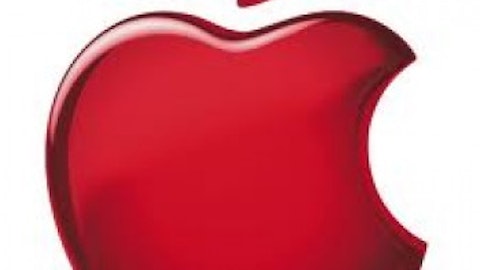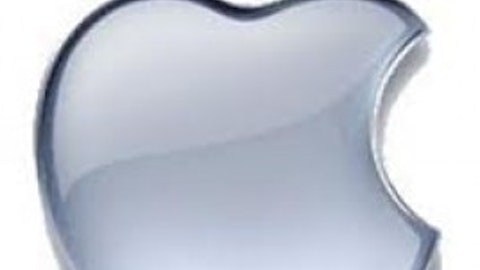Redmond-based Microsoft Corporation (NASDAQ:MSFT) is often considered to be a laggard in the otherwise fast-changing tech industry. It has missed the bus on several occasions, such as failing to capitalize on the smartphone and tablet revolution at the time it happened, and the results are pretty obvious as the company is still struggling to gain a foothold with its Windows 8 phone operating platform. But more than that, the general perception about Microsoft’s delayed response cycle usually centers around the bureaucracy and red-tapism that is thought to be widely prevalent in the 98,000 employee-strong organization.
Yes, Microsoft Corporation (NASDAQ:MSFT) has always fostered a spirit of internal competition, but then again, that competitiveness has often been so severe that it has suppressed seemingly good examples of innovation in some cases. Enter ‘One Microsoft’ – management’s answer to these perennial problems plaguing the company.
So what is it all about?
Well, for the uninitiated, the entire concept revolves around reducing the number of business units functioning within the company (often as independent Kingdoms, as they say) and simplifying the entire reporting structure. But most importantly, it’s about projecting the company’s image in a totally different light. Microsoft Corporation (NASDAQ:MSFT) no longer wants to be known as a software-focused firm, but rather wants to concentrate more and more on devices and services that it offers to its customers all over the world.

Similarities with Apple Inc. (NASDAQ:AAPL)
And as we take note of the ever-declining figures for worldwide PC shipments, Microsoft Corporation (NASDAQ:MSFT)’s need for product diversity and faster design cycles becomes all the more evident. Incidentally, any talk of faster design cycles raises the prospect of comparing the company with smartphone behemoth Apple Inc. (NASDAQ:AAPL), as the latter also seems to be grappling with the problem of a distinct lack of innovation, as of now. And even as Microsoft CEO Ballmer has publicly stated that he wants his organization to be modeled on the lines of Apple, both companies have also displayed an attitude of zero tolerance towards key organizational members (read Steven Sinofsky of Microsoft and Scott Forstall of Apple) who have somehow stood in the way of promoting inter-departmental innovation, leading to their sudden departures. And both companies have a common enemy in Google Inc (NASDAQ:GOOG), the developer of the Android operating system that continues to remain way ahead in global popularity.
But then again, once we look at the bigger picture, there does seem to be several aspects that might work out in Microsoft Corporation (NASDAQ:MSFT)’s favor in the long run. Have a look.
The Xbox One volte face
A classic example of Microsoft Corporation (NASDAQ:MSFT)’s far quicker response cycle with regard to audience preferences would be the policy reversals related to the company’s newly-launched Xbox One game console. And even if these policies such as the removal of restrictions on used games and daily internet connectivity have been prompted by the need to compete with the relatively less expensive Sony PlayStation 4, that still doesn’t discount the fact that Microsoft was really quick to cater to the core demands made by its loyal gaming audience. Going ahead, the organizational restructuring should lead to more instances of such faster turnarounds, which is what is exactly needed in today’s rapidly changing scenario.
Reaching out to the clouds
The other aspect which I like about the newly-resurgent Microsoft Corporation (NASDAQ:MSFT) is its willingness to collaborate with industry peers, even those that it may have considered as traditional rivals at some period of time. A case in point would be its recent announcement of a tie-up with software applications giant Oracle Corporation (NASDAQ:ORCL), under which the latter’s 12c cloud-based software that includes Java and Linux applications, would be offered as a part of Microsoft’s Azure cloud-based service.
While that means a possible boost for Azure vis-à-vis rival Amazon.com, Inc. (NASDAQ:AMZN)’s web-based offerings, the thing I feel good about here is the fact that the company is really going all out to attract more customers, shedding its own inhibitions and pre-conceived notions in the process. Now that’s surely a good start, especially in an age when people are increasingly becoming averse to storing their online files and folders on expensive on-premise hardware.
The smartphone aspect
With the PC industry being down in the dumps for quite some time now, another major area of concentration for Microsoft Corporation (NASDAQ:MSFT) has been the promotion of its Windows 8 phone operating software. And its main collaborating partner in that area has got to be Finnish smartphone maker Nokia Corporation (ADR) (NYSE:NOK), with the latter accounting for around 80% of the total Windows-based handsets (read Lumias) shipped globally in recent months. But that still doesn’t discount the fact that Apple Inc. (NASDAQ:AAPL)’s iOS and Google Inc (NASDAQ:GOOG)’s Android operating systems together comprise about 92.3% of the global smartphone market share, leaving Windows 8 at a distant third position with an embarrassing 3.2% share, according to IDC data.
At the same time, Microsoft Corporation (NASDAQ:MSFT) is reaching out to its wireless carrier partners in a big way, and the results are beginning to show up as Verizon Communications Inc. (NYSE:VZ) Wireless and Sprint Nextel Corporation (NYSE:S) are both gearing up to release a number of Windows 8 based devices. That should be good news for boosting sales of such phones. On the OEM front, Microsoft is certainly not staying content with its Nokia partnership only and other manufacturers such as HTC and more recently, LG Electronics, are also in the process of releasing more Windows 8 based handsets.





